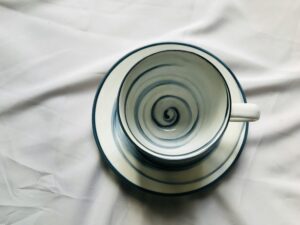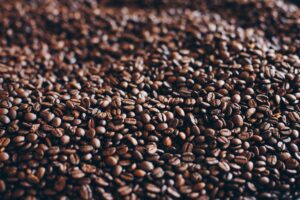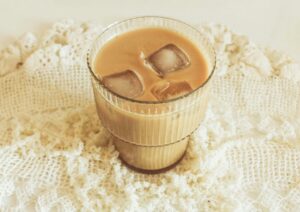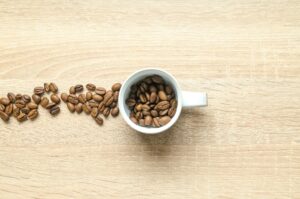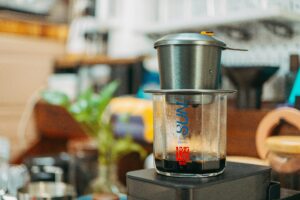Coffee is an art, but it’s also a science. From the moment you grind the beans to the final sip, a series of chemical reactions and precise variables determine the flavor, aroma, and overall quality of your brew. But what makes one cup of coffee perfect while another falls flat? The answer lies in understanding the science behind it.
Table of Contents
In this blog, we’ll break down the science of coffee—covering everything from the chemical composition of beans to the physics of brewing. Whether you’re a casual coffee drinker or a dedicated home barista, this guide will help you master the art of making the perfect cup.
1. Coffee Beans: The Chemical Foundation
Let’s start with the most essential ingredient—coffee beans. But did you know that coffee beans are actually seeds from the coffee cherry? When roasted, these seeds transform into the aromatic beans we know and love.
The Chemical Composition of Coffee Beans
- Caffeine: A natural stimulant responsible for coffee’s energizing effects.
- Chlorogenic Acids: Antioxidants that contribute to coffee’s acidity and bitterness.
- Lipids: Oils that create the smooth texture and creamy body of the coffee.
- Sugars: Caramelize during roasting, adding sweetness and complexity.
The Role of Roasting: A Chemical Transformation
- During roasting, beans undergo the Maillard reaction, where amino acids and sugars interact, creating a complex flavor profile.
- Light Roast: Retains more acidity and fruity flavors.
- Dark Roast: Has a bold, smoky flavor with less acidity.
Pro Tip:
Choose your roast based on your flavor preference. Light roasts are great for fruity, floral notes, while dark roasts offer deep, bold flavors.
2. The Science of Grinding: Particle Size Matters
Imagine trying to brew tea with whole leaves versus crushed leaves. The surface area exposed to water changes the flavor extraction—and the same is true for coffee.
Why Grinding is Crucial
- Surface Area: The smaller the grind size, the more surface area is exposed, leading to faster extraction.
- Extraction Rate: Fine grinds extract faster, making them suitable for espresso. Coarse grinds extract more slowly, ideal for French press.
Grind Sizes and Brewing Methods:
- Extra Coarse: Cold Brew.
- Coarse: French Press.
- Medium: Drip Coffee Makers.
- Fine: Espresso.
- Extra Fine: Turkish Coffee.
The Science Behind Over-Extraction and Under-Extraction:
- Over-Extraction: Too fine a grind or too long a brew time results in bitter, harsh flavors.
- Under-Extraction: Too coarse a grind or too short a brew time produces weak, sour coffee.
Pro Tip:
Invest in a burr grinder, which provides a consistent grind size. Blade grinders can produce uneven particles, leading to poor flavor.
Greater Goods 0.1g Precision Coffee Scale with Timer

- 𝗠𝘂𝗹𝘁𝗶𝗽𝗹𝗲 𝗠𝗲𝗮𝘀𝘂𝗿𝗲𝗺𝗲𝗻𝘁 𝗢𝗽𝘁𝗶𝗼𝗻𝘀
- 𝗣𝗲𝗿𝗳𝗲𝗰𝘁 𝗳𝗼𝗿 𝗣𝗼𝘂𝗿-𝗢𝘃𝗲𝗿 𝗖𝗼𝗳𝗳𝗲𝗲
- 𝗘𝗻𝗲𝗿𝗴𝘆-𝗦𝗮𝘃𝗶𝗻𝗴 𝗧𝗶𝗺𝗲𝗿
3. Water: The Universal Solvent
Did you know that coffee is 98% water? That means the quality of your water is just as important as your beans.
The Chemistry of Water
- Mineral Content: Minerals like calcium and magnesium can enhance flavor, but too much can lead to bitterness.
- pH Level: Water with a neutral pH (around 7) is best for brewing.
- Temperature: Water temperature should be between 195°F and 205°F (90°C to 96°C) for optimal extraction.
How Temperature Affects Extraction:
- Below 195°F: Incomplete extraction leads to weak, sour coffee.
- Above 205°F: Over-extraction results in a bitter, burnt taste.
Pro Tip:
If you don’t have a thermometer, bring water to a boil, then let it sit for 30 seconds before using.
4. The Perfect Coffee-to-Water Ratio
One of the most common mistakes in coffee making is using the wrong ratio of coffee to water. This ratio determines the strength and flavor of your brew.
The Golden Ratio:
- 1:15 to 1:18 (coffee to water) is the standard range.
- For a balanced cup, use 1 gram of coffee for every 15-18 grams of water.
- For stronger coffee, use a 1:12 ratio. For a lighter cup, try 1:20.
The Science of TDS (Total Dissolved Solids)
- TDS is a measure of the dissolved coffee particles in your brew.
- A well-extracted coffee should have a TDS of 1.15% to 1.35%.
Real-World Example:
If you use 20 grams of coffee, you should add around 300 grams of water for a balanced brew (using a 1:15 ratio).
5. Brewing Methods: The Physics of Extraction
Your brewing method directly impacts how coffee’s flavors are extracted. Each method uses different principles of physics, from immersion to pressure.
Immersion Methods:
- French Press: Coffee grounds are steeped in hot water for a set time. The plunger is then pressed down, separating the grounds.
- Cold Brew: Coarse coffee grounds are steeped in cold water for 12-24 hours. The result is a smooth, low-acid coffee.
Percolation Methods:
- Pour-Over (V60, Chemex): Hot water is poured over coffee grounds, which flow through a filter.
- Espresso: Water is forced through finely-ground coffee at high pressure, creating a strong, concentrated brew.
Pro Tip:
Experiment with different brewing methods to understand how each one affects flavor. A single-origin coffee can taste fruity in a pour-over but rich and bold in a French press.
6. The Role of Milk and Cream: Emulsification Explained
Have you ever noticed that milk can transform your coffee’s flavor? That’s because of emulsification—a process where fat molecules in milk mix with coffee, creating a smooth, creamy texture.
The Science of Frothing:
- Frothing creates microfoam, tiny bubbles that give milk a silky texture.
- Whole milk froths best due to its higher fat content.
- Non-dairy alternatives like oat milk can also produce a creamy texture due to natural fats.
How Heat Affects Milk:
- Below 140°F: Milk is too cool, and flavors are muted.
- 140°F – 160°F: The ideal range for a creamy, sweet texture.
- Above 160°F: Milk proteins break down, resulting in a burnt taste.
Pro Tip:
For the best latte or cappuccino, aim for milk at around 150°F.
7. Tasting Coffee: Understanding Flavor Profiles
Finally, let’s talk about tasting. Understanding the flavors in your coffee is the best way to perfect your brew.
The Coffee Flavor Wheel:
- Aroma: Fruity, floral, nutty, smoky.
- Acidity: Bright, citrusy, or smooth.
- Body: Light, medium, or full.
- Finish: Short and clean, or long and lingering.
How to Taste Like a Pro:
- Smell: Inhale the aroma deeply.
- Sip: Take a small sip, allowing the coffee to coat your tongue.
- Analyze: Identify the flavors and how they change as the coffee cools.
Interactive Exercise:
Brew the same coffee using two different methods (like French press and pour-over). Taste each one and note the differences.
Frequently Asked Questions (FAQs)
Q1: Why does my coffee taste bitter?
A1: This is usually due to over-extraction, which can happen from too fine a grind, too long a brew time, or water that’s too hot.
Q2: Can I use tap water for brewing?
A2: It depends on your water quality. Filtered water is best, as it avoids unwanted flavors from minerals or chlorine.
Q3: What is the best grind size for drip coffee?
A3: A medium grind works best for drip coffee makers, ensuring balanced extraction.
Q4: Why does my frothed milk taste burnt?
A4: Milk heated above 160°F will scald, giving it a burnt taste. Aim for 140°F to 150°F.
Conclusion: Mastering the Science of Coffee
Mastering the perfect cup of coffee is about understanding the science behind it. From the chemistry of beans to the physics of brewing, each step can be adjusted to create your ideal brew. So, go ahead and experiment—your perfect cup is just a few tweaks away.

